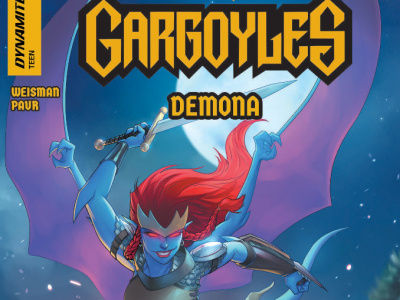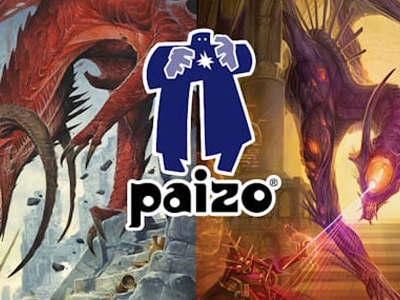From where you sit, how does the manga market look today? What’s hot, and where do you think there is room for growth?
Stu Levy: It’s exciting to see such a wide-ranging interest in manga, from what seems like the largest pool of readers worldwide to date. Further, a diverse range of content is being read, which means manga is becoming more of a medium instead of a genre. In terms of sheer popularity, it’s quite obvious that the big shonen titles which have become hit anime series are the blockbusters. Amongst those, horror, romance and even some comedy are doing well. Literary manga and slice-of-life even seem to have found readerships. In fact, it feels more and more like the matrix of manga popularity in the US is beginning to resemble Japan more and more. Still, certainly genres like sports and seinen titles do not sell like in Japan (and of course “salaryman manga” isn’t a thing in the English language). Growth is an interesting question because I notice that more manga titles are being released now than even during [its] mid-2000’s heyday. I think at this point growth really only comes from more online readers and each new generation coming into manga while previous manga readers still read it as they age. But I’m skeptical that readership penetration within the same generation will increase – I think we may have hit a saturation point. There may still be the dream of a million-seller blockbuster hit though – in other words, the next Harry Potter could be a manga series.
How has the market changed since Tokyopop’s heyday in the mid-2000s?
During the first manga boom, the readership was smaller and younger. Using a sports analogy, it didn’t have a deep bench. Since that time, those readers have aged and are now in their 20s and 30s (or even older), and some have children. So the age range has increased, meaning more people in each generation are reading manga – and not just manga but also comics, webtoons, graphic novels, even light novels. Further, since anime has become ubiquitous thanks to digital streaming, the awareness of the visual aesthetic has no more boundaries. With so many people enjoying anime, a larger sub-section of that audience seeks out the vaunted source material. Back in the mid-2000’s, the boom caused a race to publish more and more material (to increase sales), and the saturation point of supply and demand flipped, causing (together with piracy and the Great Recession) the crash. There may be another crash in the future, but since demand is broader and deeper, the market can handle more supply. However the market is still not Japan and at some point supply can overtake demand, causing another crash, or at least a downward trend.
Where do you think Tokyopop fits into the current market – what is your niche, and what are you doing that nobody else is doing?
Back then we were the leading company, then eventually Viz caught us and it was a head-to-head battle. Of course, being the subsidiary of Shueisha and Shogakukan, they slid into an easy victory and we had to bow out of the market. In the meantime, our European company became stronger and stronger, and we’re now a significant player in the German market. Here in the US, we started publishing again a few years ago, with a restrained approach. We have purposely been careful about what we publish and how we publish it. Our focus has been on a few areas – inclusive romance with our LOVE x LOVE line, big brand partnerships like Disney, Ubisoft, Capcom and others to come, and support for diverse creators like with our International Women of Manga program. We re-released some of our classic manga titles (like Aria, The Tarot Café, Dark Metro, Dramacon, and Bizenghast) and dabbled in some isekai. All in, I don’t think any manga publisher is so unique that no one else does what they do, but I feel like these areas are particularly strong for us. In fact, we’ve noticed the larger manga publishers are now putting more emphasis in some of these areas as well. This was the same in the old days – when something is working, others try it too.
What are your top titles at the moment?
Our strongest titles include a range of LOVE x LOVE titles (Dekoboko Sugar Days, There Are Things I Can’t Tell You, FANGS, The Cat Proposed, Replay), a few Disney titles (The Nightmare Before Christmas, Descendants, Beauty and the Beast, Stitch), Assassin’s Creed from Ubisoft, classics such as Aria and Dramacon, creator titles (Goldfisch, Kamo: a Pact With the Spirit World, Undead Messiah), and a few of our isekai series (I was Reincarnated as the Villainess in an Otome Game But the Boys Love Me Anyway!, Her Royal Highness Seems to be Angry, A Gentle Noble’s Vacation Recommendation).
Where are people buying Tokyopop titles – in chain bookstores, indies, online bookstores, comic shops, or digitally? How has that changed over the years?
Our books are bought at a wide range of places including chains such as Barnes & Noble, Books A Million, Chapters / Indigo, indie bookshops and comic book shops, and online retailers such as Amazon and RightStuf. It hasn’t really changed that much over the years except no Borders nowadays.
If you look at the BookScan charts, the top selling manga right now are shonen action stories. Tokyopop seems to be moving in a different direction, with more emphasis on romance. Am I right about that, and if so, why did you choose that niche?
We’d love to get a hit shonen action manga, who wouldn’t? But Viz is owned by Shueisha and Shogakukan, Kadokawa owns Yen Press, and Kodansha has their own American operation, so finding those licenses is a challenge. The publishing business is big enough for publishers to focus on different areas, and our team is passionate about inclusive romance and expanding LGBT representation while I’m passionate about brand tie-ins and creator-driven projects so we team up on those segments.
One thing I’m hearing a lot of is “Where are the manga for children?” You publish a number of young-readers titles, many of them Disney licenses. How are those doing? Do you think there’s room in the market for more kids’ titles?
We plan to focus a lot on this area since we’ve learned so much about it through our Disney relationship. It’s not easy to license children’s manga from Japan since content hurdles exist, but we will be investing in building up middle-grade and younger aged content. We’re well aware of the desire for these titles thanks to extensive and passionate feedback from librarians and teachers, and that’s one of our key initiatives over the next few years.
How important are library and school sales for Tokyopop? What concerns do you have about the recent wave of challenges to LGBTQ+ books?
We’re a big believer in the importance of libraries and schools. I’m a recent father myself and see the world through my son’s eyes. Everything is new and exciting to him, and it makes me realize just how much of a responsibility we have as parents to guide our children and encourage what they love. Libraries are a fantastic community center and of course (almost) all children’s lives center around school, so to the degree that we can participate in those communities in a positive way, that’s a win-win. Further, if children and teens are enthusiastic about something like reading manga or playing games, it’s critical that our society provides learning experiences through those mediums. In terms of some communities being stricter on censorship than others, the best we can do is make stories the stories we believe in available as widely as possible. Young people know where to go in order to find the content they are interested in.
Looking back over the past 25 years, one of the things that Tokyopop definitely had a hand in, in the early days, was marketing manga as books, graphic novels, rather than comics or magazines. I know you started with Mixx magazine, which went through a couple of different iterations, and then you published Sailor Moon as a graphic novel. Can you recall what your reasoning was for doing that, and how you were able to market it successfully in bookstores? How did readers’ relationships change to manga once they were consuming it as books rather than serials in magazines?
This is a long story – and in fact I’m working on a book that covers our first quarter century so will cover these areas in detail – but I’ll condense greatly here. We originally wanted to emulate the Japanese model of discovery through a very affordable medium (a magazine) and product sales through the book collections (tankobon). We tried our hardest to make the magazine discovery model work but it simply wasn’t possible in the US market. Once we gave up on the magazine, we focused on other aspects of discovery (including sampling, the Internet, etc.) and selling the actual books. While we also sold to comic book shops, the medium of manga, the interested customers, and the content itself didn’t directly appeal to most of them whereas it appealed to mall-based bookshops (in particular, Walden at the time) followed by big box retailers such as Borders and Barnes & Noble. Since the magazines never really achieved their goal of wide circulation for discovery, I don’t think enough manga readers ever became truly used to serialization. In fact, I think readers nowadays are actually more used to serialization via Webtoons and similar apps than back then, but ultimately if you’re a fan of a particular series or book, owning that and keeping it on your shelf remains of value. Will that change in the future as more of our world becomes digitized? I’m not sure, but certainly the ability to own, collect and display is important to today’s fans.
In your experience, what is the place of comic shops in the manga business? Are there particular titles or genres that do better in comic shops?
Comic book shops are critical to the health of the comic book business overall, and manga is a significant part of the comic book business. So, we love shops that are interested in manga since we do believe that there’s a crossover in the market between comic and manga readers. Of course, a shop needs to consider their physical footprint and shelf space – does it make sense for them to stock manga? There is a *lot* of manga content so unless they really feel comfortable with the commitment, it may actually be better to focus on the comic books they know the best. However, if they’re willing to wade into it, there will certainly be manga that would appeal to many of their customers. That said, replicating Barnes & Noble or Amazon shouldn’t be the goal – it's better to focus on specific titles that the shop owner is excited about and wants to introduce to their regular customers.
Tokyopop also published manhwa and “global manga” by non-Japanese creators. Do you still do that? What does the market for those two categories look like? Which is the most popular: Manga, manhwa, or global manga?
We’ve always believed that manga had the potential to inspire creators worldwide, and we’ve seen that proven by the growth of webtoons, manhua and local manga-influenced comics around the globe. The fanbase nowadays seems open to this type of content, regardless of the geographic origin. There are still purists who will only buy manga from ethnic Japanese creators that originated in Japan, but they are the minority.
Another thing Tokyopop accomplished, whether deliberately or not, was drawing in girls as comics readers. How did you market specifically to girls back in the early days, and how do you do that differently now?
For us it’s really about content. We built our company on the back of Sailor Moon in particular, so it was natural that girls became our customers from the get-go. I personally enjoyed shojo manga when I was living in Japan, learning about manga and reading a lot, back in the day. So, for me, it was easy to introduce titles to our team, as well as license great shojo stories. We ran with that since the content was compelling and no one was publishing it. End result was simply that girls, who were supposedly never going to read comics, became manga fans. We don’t do anything specific to market to girls, women, or people who enjoy shoujo and josei stories other than select content that happens to appeal to them. Since our team mainly consists of women, there’s also an organic understanding of what’s attractive to that segment of the comic readership.
What have you learned about the buying and reading habits of manga fans?
Manga fans love to share their favorite titles with friends, and they also enjoy discovering something new. Once manga fans dive into a series and get hooked, they go deep. They’re very passionate about manga and related areas like anime, and gaming. So, for us, it’s important to communicate with them, listen to their ideas, and constantly improve what we do. If fans are willing to take the time to give us feedback, then we want to make sure we pay attention to what they have to say.
What advice would you have for a retailer who wants to expand their manga selection?
I think the most important thing is to not think about manga as a genre, but instead a medium. The content range is so vast within manga that it’s key for a shop owner to consider what their goal is – onboarding existing customers into manga they’d like? Bringing new customers into the shop? Once that goal is clear, it’s easier to think about the manga content that would fit – blockbuster shonen titles? Boutique literary works? Romance and LGBTQ+ titles? I’d start with the customers and their interests and go from there.
For more great Manga Week coverage, click here!









